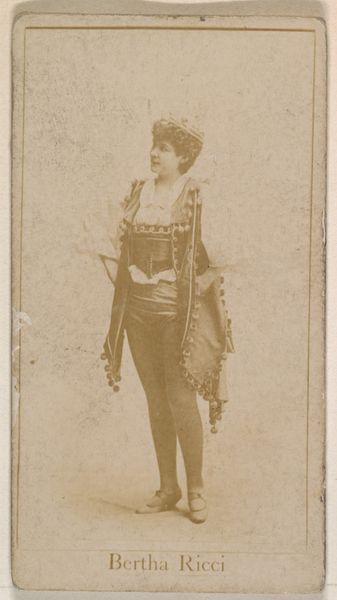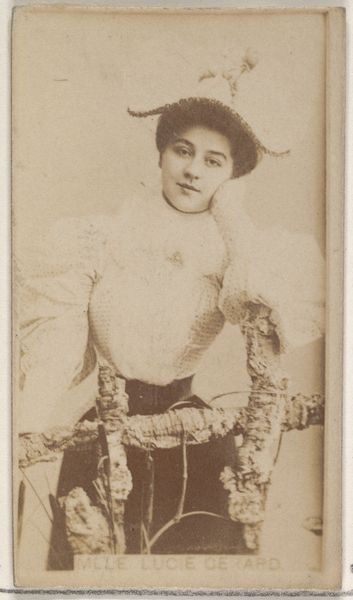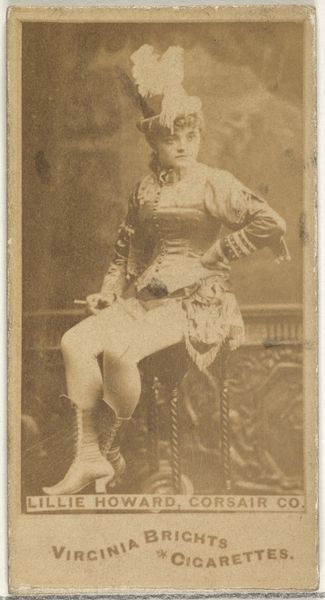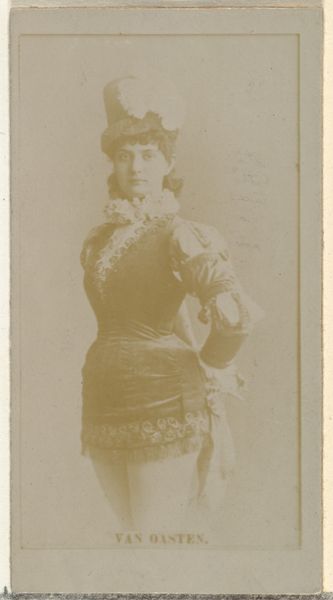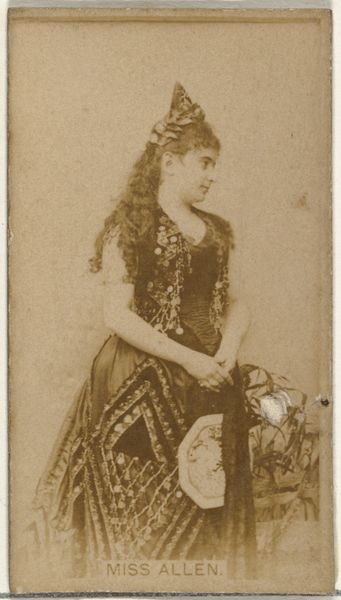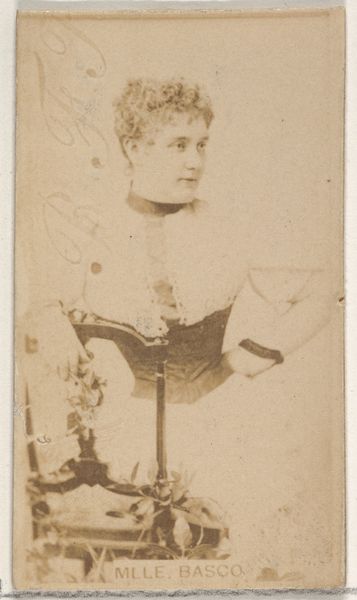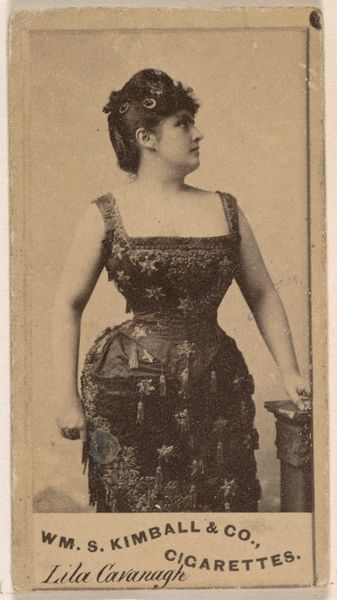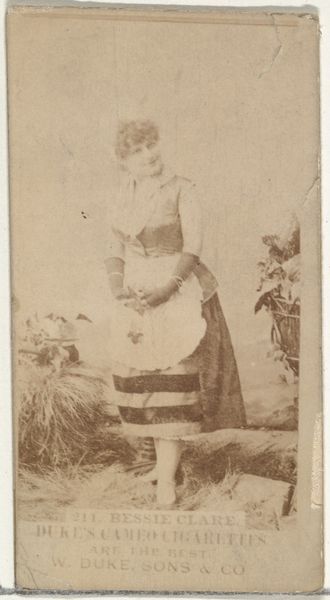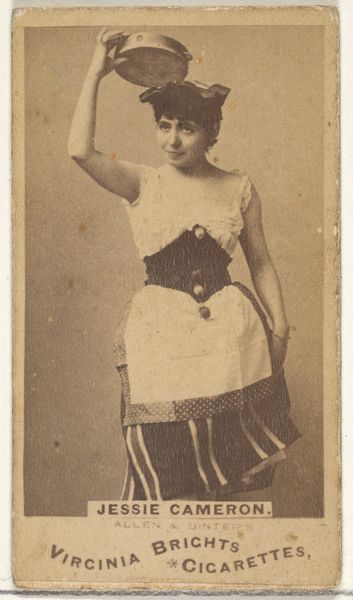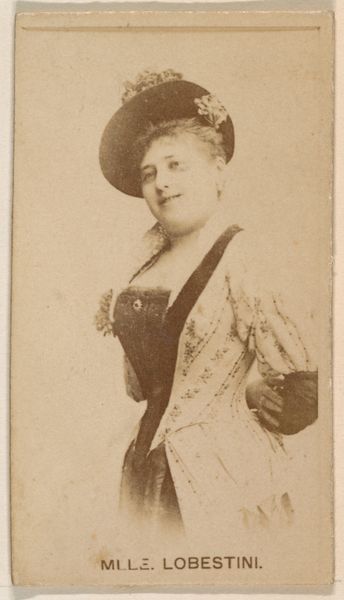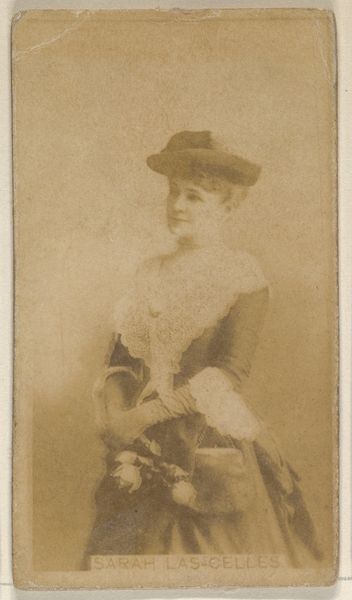
Alice Sanson, from the Actresses series (N245) issued by Kinney Brothers to promote Sweet Caporal Cigarettes 1890
0:00
0:00
drawing, print, photography, albumen-print
#
portrait
#
drawing
# print
#
photography
#
albumen-print
Dimensions: Sheet: 2 1/2 × 1 7/16 in. (6.4 × 3.7 cm)
Copyright: Public Domain
Curator: Look at this striking portrait of Alice Sanson from 1890. Part of the Actresses series by Kinney Brothers, who used them to promote Sweet Caporal Cigarettes. Isn't it fascinating how advertising has evolved? Editor: Intriguing! There’s a softness to it; a sepia-toned nostalgia that wraps around this woman like a comforting secret. And those boots! They tell such a story. Curator: It’s more than just a pretty picture; it's a testament to late 19th-century media culture, mass production and celebrity. These were albumen prints, essentially photographs mounted on card stock. Editor: Albumen, wow. And her posture, so calculated, every pleat and ruffle contributing to an almost sculptural effect. Is she aware of her body being displayed so prominently, packaged to sell things to strangers? It feels exploitative. Curator: Exploitation might be the wrong word. Her gaze hints at a strong sense of self-awareness, as does the meticulous arrangement of visual textures—lace meeting leather, fabric rippling across skin in waves, that playful light glinting in her hair... Editor: Playful yet constrained? I'm looking at those vertical lines of her dress, they cut her body to pieces with these perfect artificial parallel rhythms! Her costume traps the viewer to its gaze—her legs! How am I supposed to look away from her legs, posed with theatrical seduction? Curator: Semiotics might tell us the legs were never for sale by themselves. This type of media product allowed mass audiences to access and, on some level, to feel connected to celebrities like Alice Sanson. Editor: Maybe… and looking at the image as a whole I can’t deny it’s alluring and well put together! Curator: I agree—let's keep digging in deeper, so others might consider just how deeply connected advertising and representation have always been.
Comments
No comments
Be the first to comment and join the conversation on the ultimate creative platform.
